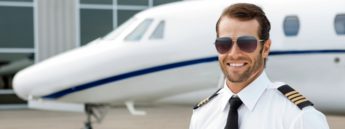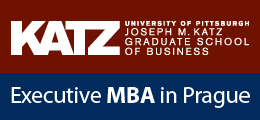How to Fund Pilot Training
If you’re currently cosindering being a pilot , one or the other way, probably the most magical question that you keep asking yourself is how I can fund my pilot license studies? And you are not the only one who wonders about it. So how did aviation world arrive to the point of the pricy education, airlines ignorance and how is the industry changing in regards to the tricky situation?

The truth about the power of free market
Awhile ago, when the aviation industry was living its infant years it used to be a common practice for an airline to finance its students while they undergo Ab Initio and type rating training. It ensured that students are trained just the way that airline needs and most importantly, built an emotional bond with the airline which kept the turnover to the minimum and gave students a workplace for life. But things have changed…big time. When the pilot profession became a desirable occupation and the number of people seeking this prestigious profession went up it changed the whole paradigm of pilot training. Those who wished to become pilots also had the means to do it, therefore, airlines saw no logical reason to continue funding pilot training if people themselves were able to pay for it. And this is when the marked shifted. But we are not talking about the good and evil of this shift, but rather looking for the ways to actually finance the studies and achieve the desired outcome – pilot license in hand.
Cadets – the plan of the strongest
The first idea that comes to mind when thinking about pilot training possibilities is cadet programs. But we will have to break it out for you right here…cadet training programs are only in the plans of the strongest airline in the market and unfortunately, the number of cadets they take is very limited.
One very important thing which must be stressed is that airlines are looking for the very best, thus the assessment processes are rigorous because airline must be sure of the applicant’s competences and skills. Currently open cadet programs are run by WizzAir, Condor, Aer Lingus, Cathay Pacific, airArabia, Qatar Airways, easyJet, Emirates, Dragonair, Thai Air Asia, Jetairfly and Virgin Atlantic. It is not difficult to find a list of companies engaged in cadet programs, however each company has different and very specific requirements: some require English and German language knowledge or even the knowledge of three specific languages, some only recruit the nationals of the airline country and that is not the final list of the specifics and requirements. And most importantly, there are always exceptions to the rules – it is not fully sponsored or not sponsored at all. Thus Cadet training is an option for some, others must look for the alternative ways to do it.
Airlines changing its position?
Both sides are dissatisfied with the current situation, airlines lack experienced pilots and those who have a dream still struggle to find a way to pay for it. However, some airlines are beginning to change their position. Or at least try to make us think so. Such companies as JetBlue, British Airways, AirAsia or China Airlines loudly boast about their offered sponsorship programs such as Gateway from JetBlue or BA Future Pilot Programme, but does it really sponsor the training? As it might focus on talking about the easier way to become a pilot, most of these programs are based on bond or installment payment systems which one or the other way are carried by the student. So once again, for some students this might be an option because they can divide the payment or start returning the investment once they are employed.
The other route that airlines are taking in order to show the positive side of the investment is partnerships with certain flight academies. What this should tell the student, is that their investment in the studies at a certain flight training organization is worthwhile even though a lot of times is double compared to the market average. It is true that airlines favor students from their partner flight training academies, but how can one be certain there won’t be another student from a different aviation training academy with better skills and more adept for the job?
How about a license with a degree?
Stepping away from the world’s airlines, let’s look into the joint degree programs where students can combine their pilot license studies with various aviation related Bachelor degree programs that are looked at a lot more favorably by the financial governmental organizations. Almost every country has a certain financial structure which helps to finance vocational education and thus ease the burden placed on the student. This is especially true in some European countries which provide various funding options.
First one is seeking financial support from the governmental institutions in the student’s home country. A lot of times government offers possibilities to fully or partially finance the studies without the obligation for the student to pay it back. Another one is to seek financial support in the country where the flight training school is located. Both of these methods does not require student to return the money that government invested in their studies. The third financial model that students can seek is the financial support from the education funding organizations that are backed up by the government. This is especially true for Scandinavian countries where government is encouraging student mobility thus provide funds for their education in national and international higher or vocational studies institutions.
The fourth option is only applicable for the United States of America and the United Kingdom residents who can contact a variety of foundations that are operating in the region. Most of the time those foundations are administered by the influential individuals who dedicated their time to raise money for the purpose of giving easier access to education for those in need. And of course the last option is to take out the good ol’ loan from the bank. This way of studies financing requires student or his family members to have real estate which could be used as a security for the loan.
It is worth every penny
Some flight training academies also change their view onto pilot training and what the industry is looking for. And of course, industry desires skilled, professional and motivated employees. This doesn’t come easy, because a lot of times, those who are talented and meant to fly airplanes have difficulty affording the studies. Thus flight academies willingly decide to establish scholarship programs where the most outstanding student receives the scholarship. This does not necessarily cover the cost of the training, but is a financial support for the duration of the studies to ease the financial burden.
Can it stop you?
Some of us are born to be salesmen, some – doctors, and only a small fraction was meant to fly. If skies, airplanes, and flying has always been in your day and night dreams, there is no obstacle that couldn’t be overcome to reach the sky. Look for the ways to do it, because it is worth every minute of your effort and work.
Source: BAA Training
Publishing or copying the content of AVIATION Times without a written electronic permission is strictly forbidden. If you have any information, tips, videos, photos or your press releases for us contact us at news@aviation-times.aero.
AVIATION TIMES © Copyright 2012 - 2025







